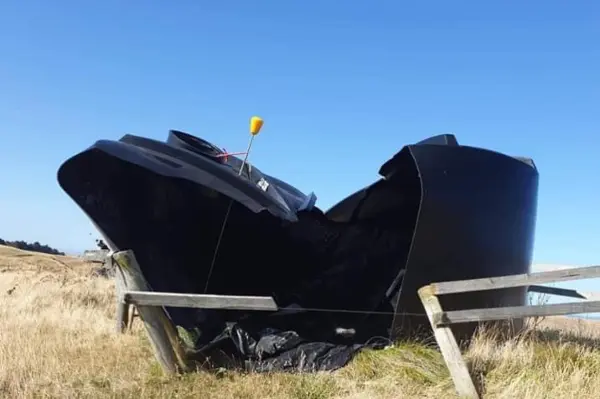Installing a water tank yourself can be a manageable DIY project, but several things can go wrong if you are not careful or experienced. Increasing your water storage with an additional water tank is an excellent idea whether we might face a drought or not. However, there are various factors to consider when installing a water tank. Are you looking for a water tank installation in Warkworth? Keep reading, we have some news for you!
How to install a water tank… and what could possibly go wrong
In New Zealand, rainwater harvesting is a common source of drinking water. With climate change causing shifts in weather patterns and a looming drought predicted for the following summer, securing your own water supply has never been more essential. Therefore, adding a second water tank to your rainwater catchment system offers excellent benefits, like conserving more of this precious resource and getting you more independent. However, getting a rainwater collection tank is also beneficial when on main water supply. It will also help you to reduce utility bills and be more self-sufficient and sustainable.
In this blog post, we will walk you through installing a water tank at home. From choosing the right location to setting up proper filtration systems, we will cover all the essential details to help you complete this DIY project.
But here’s the twist: We’ll also delve into the potential pitfalls and challenges that may arise during installation. Knowing what could go wrong is just as crucial as understanding how to do it right. So, let’s dive in and explore the do’s and don’ts of installing a water tank to ensure a smooth and trouble-free experience.
What is important when installing a water tank in NZ!
Choosing the right water tank is essential for ensuring efficient and reliable water storage. Here are the key factors to consider when selecting a water tank:
Size & Capacity
Determine the size and capacity of the tank based on your water usage needs and available space. Consider factors like the size of your roof if you plan to collect rainwater and the average rainfall in your area. Keep in mind the changing weather patterns due to climate change we have experienced so far. From our experience, more storage/ bigger tank is always better!
Material
Water tanks include plastic (polyethene), fibreglass, concrete, and metal (e.g., steel). Each material has its advantages and disadvantages. Plastic tanks are lightweight, durable, and relatively inexpensive. Fiberglass tanks are lightweight and corrosion-resistant. Concrete tanks are sturdy but may require more maintenance. Metal tanks can be durable but may corrode over time.
Installation Requirement
Consider the installation requirements of the tank. Some tanks require a concrete base, while others can sit directly on the ground. Ensure you have the necessary tools and skills to install the tank correctly.
Location
Choose a suitable location for the tank. It should be on a stable, level surface and comply with local regulations. Consider factors like access for delivery, plumbing connections, and proximity to your water source (e.g., roof for rainwater harvesting).
Shape
Tanks come in various shapes, including round, slimline, and squat. The form can affect the tank’s capacity and how it fits into your available space.
Local Regulations & Permits
Ensure that the tank you choose complies with local building codes and regulations. Obtain any necessary permits or approvals before installing the tank.
Peace of mind guaranteed – Professional water tank installation in Omaha
Are you worried about the risks of DIY? Choose peace of mind with our professional installation services. We handle the details so you can enjoy the benefits of a well-installed water tank.
How to install water tank at home
Whether you are planning to harvest more rainwater to mitigate the effects of the impending dry spell or to simply live more sustainably, installing a (second) water tank can be a practical and eco-conscious decision. Installing a water tank at home can be a straightforward DIY project if you have the necessary tools, materials, and skills.
If you are installing a second water tank to an existing system, you’ll need to integrate the new tank with the current setup. Are you looking for a professional water tank installation in Mangawhai?
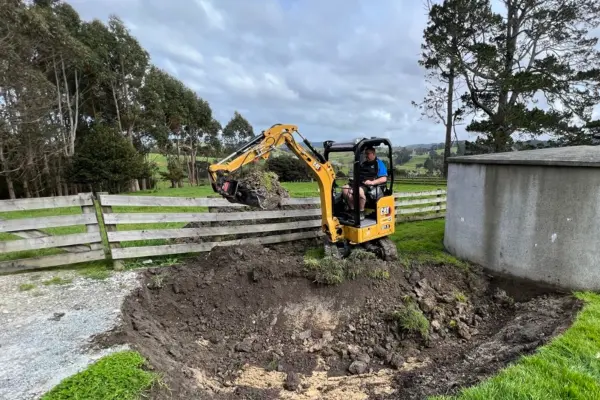
1. Choose the right location
Select a suitable site for your water tank. It should be on a stable and level surface to prevent tilting or sinking. Ensure the location complies with local regulations and any required setbacks from property lines or structures.
2. Prepare the ground
Clear the area of any debris, rocks, or vegetation that could interfere with the tank’s placement.
3. Create a stable base
Depending on your tank type (e.g., above-ground or below-ground), you may need to create a stable base. This could involve using a concrete pad or compacted gravel to evenly distribute the tank’s weight.
4. Install the tank
Carefully place the tank on the prepared base. Ensure the ground is level and stable for the tank to be safe and levelled.
5. Connect the tank to gutters or downspouts
If you plan to collect rainwater, install a gutter system on your roof if you don’t have one already. Direct the downspouts into the tank’s inlet. You may need to install a first flush diverter to divert the initial runoff containing contaminants.
OR
Install a pipe between the two tanks to allow water to flow freely between them. Ensure that the connection is watertight and secure.
6. Install overflow and outlet pipes
Connect an overflow pipe to the tank’s overflow outlet. This pipe should direct excess water away from your foundation to prevent flooding. Install an outlet pipe with a valve near the tank’s bottom to access the stored water.
OR
Connect the overflow outlet of the new tank to the existing tank’s overflow system. Make sure the inlet from your collection source (e.g., gutters) is properly routed to both tanks.
7. Set up filtration and treatment
If your existing system includes filtration and treatment components, ensure they are compatible with the new tank. If not, consider upgrading to accommodate the increased water storage capacity.
Otherwise, install appropriate water filtration systems to ensure water quality depending on your intended use (e.g., drinking water, irrigation). Standard components may include sediment filters, UV sterilisers, or chlorine injection systems.
Be aware that water needs to be potable before entering the house.
8. Install a screen or cover
To prevent debris, insects, and algae from entering the tank, install a screen or cover over the tank’s inlet. Regularly clean and maintain this screen or cover.
Otherwise, installing a pre tank rainwater filter like the Maelstrom Filer 100 mm will give you cleaner rainwater and more of it. It combines super-fine filtration and super-high water catchment efficiency. Its ability to capture more water at higher flow rates means you can more easily predict your capture and water usage.
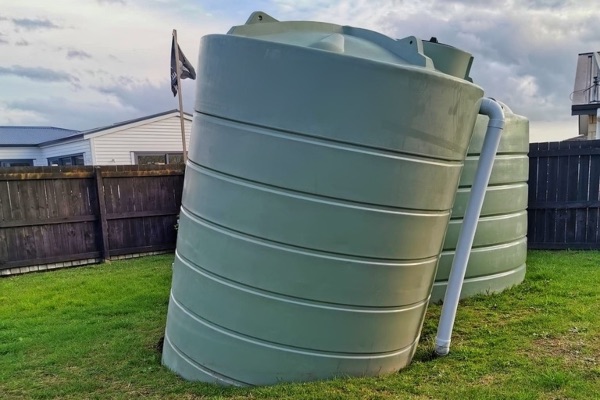
Water tank installation nz
Remember that the specific steps may vary based on the water tank’s type and size, the water’s intended use, and your local requirements. Each water tank has specific manufacturer instructions that must be followed to avoid costly pitfalls.
If you are unsure about any aspect of the installation, give us a call on 0800 278 296 and talk to our certified plumbers. Thus, we will ensure a safe and efficient installation. Get a professional advice on water tank installation in Matakana!
Best water tank installation in NZ
We have a wide variety of tanks to choose from. Thus, you can find the perfect fit for your needs. Benefit from our comprehensive water tank installation in Leigh service and enjoy clean & healthy drinking water.
Can you install a water tank by yourself
Adding a second water tank to your existing system can increase your water storage capacity and help you better manage water resources. However, it is essential to ensure that the integration is done correctly to maintain the efficiency and reliability of your water harvesting system. If you are not confident in your plumbing skills, consider consulting a professional plumber or rainwater harvesting expert to assist with the installation.
Installing a water tank by yourself can be a doable DIY project. However, there are several things that can go wrong if you’re not careful or experienced. Here are some common issues to be aware of:
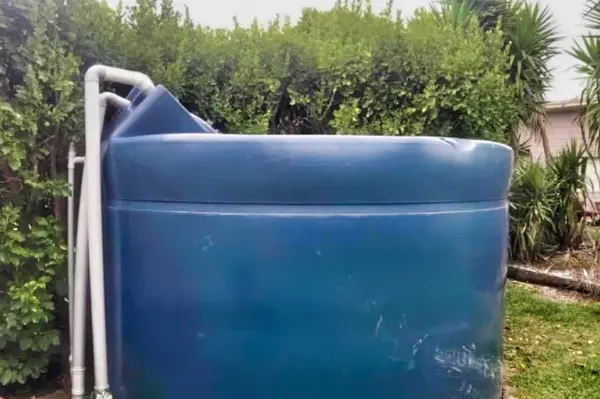
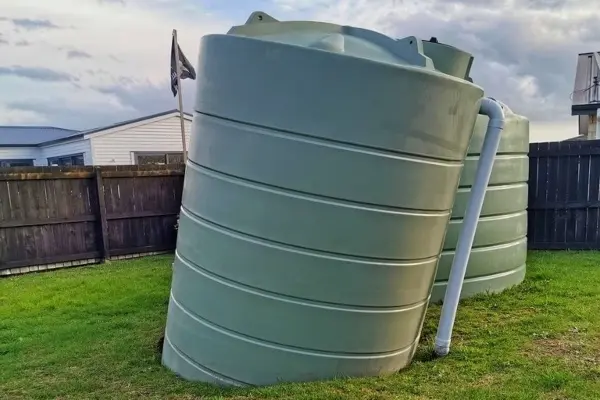
Pitfalls when installing a water storage tank in New Zealand
What could possibly go wrong if your water tank is not installed properly? Quite easy to answer but actually not fun if it is happening and your water tank tiles to one side or cracks and releases all the precious rainwater. And it might be also get costly.
Protect Your Investment – Call the Experts!
Your water tank is an investment in your property’s future. Safeguard it by relying on our expertise. Let’s work together to install your water tank correctly and efficiently. Call Raewyn at 0800 AQUA WORKS to schedule a free onsite visit and get a quote.
Water Tank Installation in NZ
What can go wrong if you don’t have a professional water tank installation? Our service technicians could come up with one or two stories.
Improper Sizing of Water Tank
Choosing a water tank that is too small for your needs can result in frequent shortages of water. Conversely, a tank that is too large can be wasteful and costly.
kInadequate Location of Water Tank
Picking the wrong location for your tank can lead to problems. Ensure that the ground is level, stable, and properly prepared. Tanks should also be placed away from sources of contamination, such as septic systems.
Incorrect Installation of Water Tank
The tank must be properly installed on a stable base. If not, it can settle or even tip over, causing damage and potentially posing a safety hazard.
Poor Plumbing of Water Tanks
Inaccurate plumbing connections can lead to leaks, low water pressure, or contamination of the water supply. Ensure that you have the necessary skills to install the plumbing correctly.
If the new rainwater tank is for potable water in your home, all plumbing needs to be done by a certified plumber. Otherwise, the insurance won’t cover the damage.
If you are on main water supply, installing a proper backflow prevention device is critical and legally required.
Lack of Proper Filtration and Treatment
Failing to install proper filtration and water treatment systems can result in poor water quality. This can lead to health issues or damage to appliances and plumbing.
Depending on the source of your water, it may contain impurities, sediment, or microbes. Failing to address these issues can result in water that is not safe for consumption.
Failure to Obtain Permits
In some areas, you may need permits to install a water tank. Failure to obtain the necessary permits can lead to legal issues and fines.
Last but not least; safety concerns!
If you’re not experienced with heavy equipment or working with water tanks, there can be safety risks involved in the installation process. Accidents can happen if proper safety precautions are not taken.
To minimise these risks, it is a good idea to research and plan your installation thoroughly, follow the manufacturer’s instructions carefully, seek advice from experts if needed, and consider hiring a professional if you’re uncertain about any aspect of the installation. Additionally, check local regulations and permit requirements to comply with all relevant laws and standards. Properly installed and maintained, a water tank can be a valuable addition to your property.
Avoid costly mistakes – Choose expert water tank installation Warkworth
The risks of DIY water tank installation can lead to expensive errors. Trust our skilled professionals to handle every detail. Save time, money, and stress by contacting us for expert installation.
Why to choose an expert when installing a water tank
Aqua Works, your reliable partner for professional water tank installation from a single source
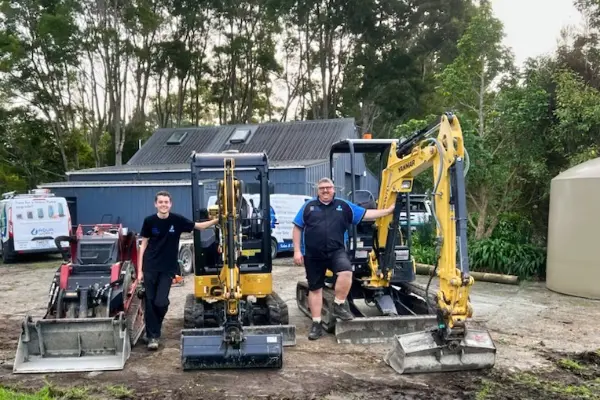
- Best quality water storage tanks from the most experienced manufacturers.
- Wide range of high-quality concrete or plastic water tanks matching NZ’s environmental conditions.
- All trades under one roof, so we only come once to get the job done, and you can enjoy safe drinking water straight after.
- Our comprehensive water tank installation service includes all related products if needed, e.g. pre-tank filters, water pumps and UV filters.
- Get your full 20-years warranty when our tradies install the water tank according to the manufactures requirements.
- Benefit from 20+ years of experience in professional water treatment, Aqua Filter, water pump and water storage installations.

